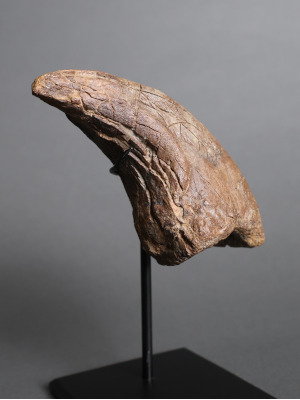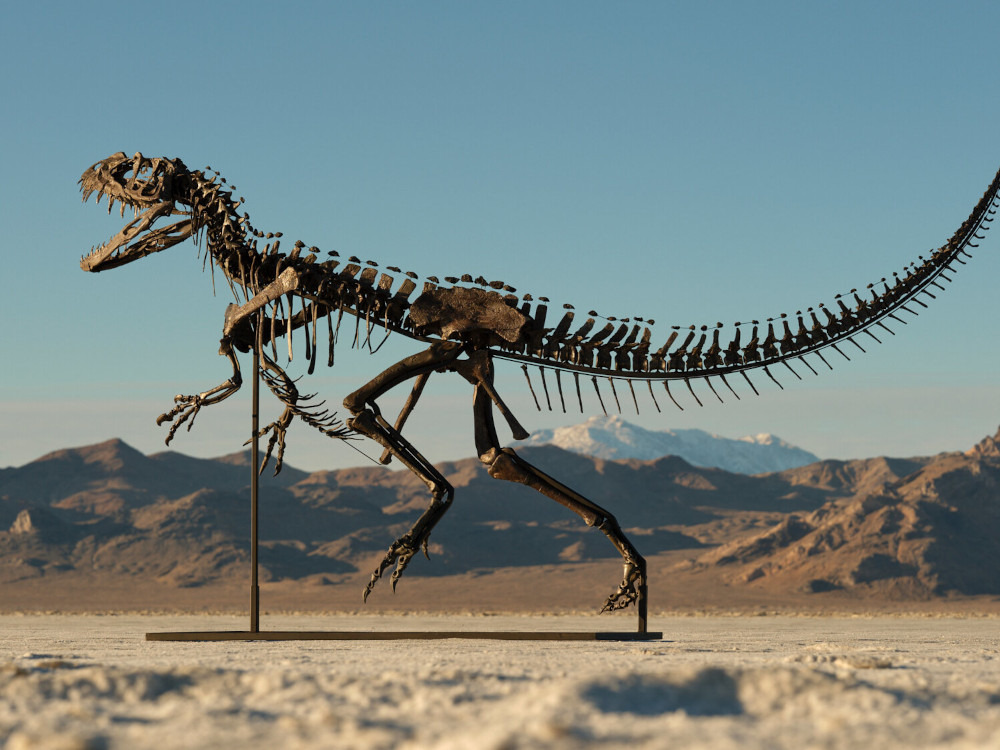A juvenile Ceratosaurus skeleton stole the show at Sotheby’s recently when it obliterated its pre-sale estimate and sold for US$30.5 million. The sale to an anonymous private buyer marked the third-highest price ever paid for a dinosaur fossil.
While the dizzying price tag attracted international media attention, it also fuelled concern among scientists and museums, as it served as yet another example of public institutions being priced out by private buyers with deep pockets.
“It’s creating challenges for research and public access,” says David Evans, co-chief curator of natural history and Temerty Chair in vertebrate palaeontology at the Royal Ontario Museum in Toronto.
“These specimens are part of our shared heritage,” he adds. “When they vanish into private collections, their scientific potential is often lost forever.”
Fossils as alternative investments
As high-net-worth investors diversify their portfolios with alternative investments—hedge funds, private credit and cryptocurrencies among them—rare items also attract their attention.
Lately, collectibles such as fine art and coins have been joined by fossils and meteorites.
“Collectors are increasingly conscious of value,” says Peter Lovisek, founder and director of Fossil Realm, an Ottawa-based dealer. “We have clients who are both collectors and investors, and they’re asking how rare something is, whether it might appreciate and how its provenance affects long-term value.”
High-profile sales like the Ceratosaurus validate prices for comparable specimens, Lovisek explains, adding that auctions set public benchmarks in a market that is usually private. He points to T. rex teeth as an example; they’ve increased “fivefold in value in just a matter of a few years.”
People who might never have considered fossils are thinking of them alongside fine art or vintage cars.
Peter Lovisek, Fossil Realm
A surge in interest following the $31.8 million sale of the Tyrannosaurus rex “Stan” in 2020, meanwhile, has pushed fossils into mainstream news and introduced them as viable alternative investments.
“Stan was an inflection point,” Lovisek says. “Since then, people who might never have considered fossils are thinking of them alongside fine art or vintage cars.”
The same trend applies to meteorites. Lunar and Martian specimens, in particular, fetch the highest prices due to their rarity and extraterrestrial allure.
“The fascination with meteorites is similar to fossils,” Lovisek says. “They represent moments in deep time and carry a sense of wonder.”
Bones of contention
Unlike fine art or vintage cars, however, fossils hold irreplaceable scientific data about the Earth’s biological history. Without details about where and how they were found, even well-preserved fossils lose much of their research value.

“We see fossils disappearing into private collections all the time,” Evans says. “Museums can’t compete with auction prices, and once a specimen is in private hands, access for research becomes much more complicated, if not impossible.”
According to a recent study published in the journal Palaeontologia Electronica, more than half of the world’s 141 scientifically useful T. rex fossils are in private or commercial hands. This is partly because commercial interests have collected more than double the number of such fossils over the past four decades than public trusts have in nearly 150 years.
While some collectors remain fiercely private, others are open to partnerships with museums. This hybrid approach is growing, Lovisek says.
Many major fossils, he adds, have been lent to public institutions. “Even collectors who buy for investment often want their acquisitions displayed, which benefits both the public and the fossil’s value.”
Evans agrees that collaboration is key but stresses the need for ethical and scientific practices. “We want to work with collectors who are passionate about paleontology, but the specimens need to be in the public trust for the science to advance. Without long-term accessibility, our ability to study and verify discoveries is compromised.”
When the stegosaurus fossil known as “Apex” sold for US$44.6 million in 2024, it was later lent to the American Museum of Natural History by its buyer, billionaire hedge fund manager Ken Griffin. But as Evans points out, this approach contravenes the Society of Vertebrate Paleontology’s code of ethics by limiting scientific reproducibility.
“In paleontology, reproducibility requires that scientists other than those conducting the original research have access to the same fossil specimens,” society president Stuart Sumida explained in a 2024 protest letter to the museum. “To ensure this access, fossils must be held in (or destined for) collections in institutions committed to their permanent care and accessibility.”
For this reason, many scientific journals refuse to publish studies on privately held fossils, even though private individuals have frequently proven to be instrumental in hunting and collecting them. Of the 12 known specimens of Archaeopteryx, for instance, every single one was found and prepared by private collectors who ultimately helped to prove that the early species of feathered dinosaur was an ancestor of modern birds.
‘It’s looking bleak’ for science
Most fossils sold at recent auctions originate from the Hell Creek Formation, a rich geological deposit stretching across Montana, Wyoming and the Dakotas. This is largely due to U.S. legal precedent, which grants landowners full rights to fossils found on their private property, allowing them to sell or trade these specimens openly.
This is unusual on a global scale. Other renowned fossil sites, such as Alberta’s badlands, Qingjiang in China and the Gobi Desert in Mongolia, classify dinosaur fossils as state-owned assets. While this does not eliminate fossil trading, it forces much of the activity underground. Smuggling by organized crime groups is common, and these illicitly traded fossils rarely, if ever, reach scientists for study.
“Private property rights are so ingrained in the U.S. that it’s unlikely we’ll see similar legislation there anytime soon,” Evans notes, adding that the future of the world’s fossil heritage—and the global scientific record—depends on a combination of public education, stronger regulation and greater transparency in the fossil trade.
“It’s looking bleak,” he concedes. “Prices are going to remain high, and museums can’t compete. We need wealthy collectors to act as heroes for science by buying these specimens and donating them—not lending them—so they remain in the public trust.”
Adam Bisby is a Toronto-based writer, editor and consultant who contributes regularly to national and international publications such as the National Post, The Globe and Mail, the Toronto Star, MSN and SHARP magazine. Over the last 30 years he has written about real estate and housing, finance and investment, technology, food and wine travel, and health and wellness, among other areas. He began contributing to Canadian Family Offices in 2021.
The Canadian Family Offices newsletter comes out on Sundays and Wednesdays. If you are interested in stories about Canadian enterprising families, family offices and the professionals who work with them, but like your content aggregated, you can sign up for our free newsletter here.
Please visit here to see information about our standards of journalistic excellence.




